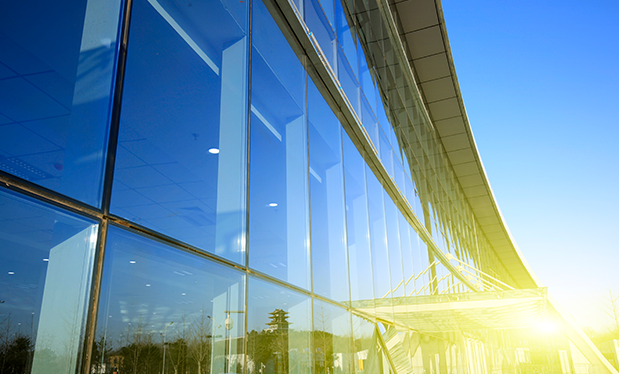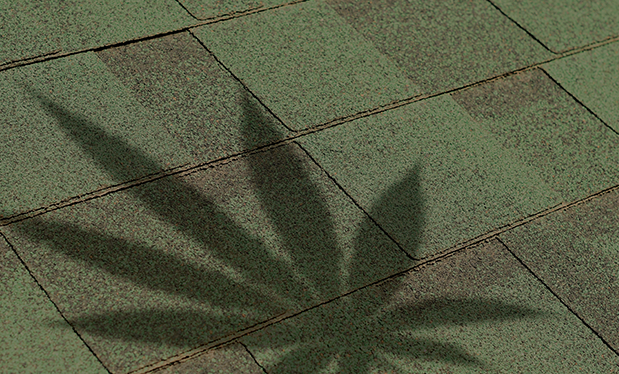NRCA continues to receive a significant number of reports of moisture-related problems associated with concrete roof decks. Following is some background information and NRCA's latest recommendations for addressing the issue.
What's happened
The issue of moisture in concrete roof decks is not new. Since 2009, NRCA has received numerous reports of moisture-related problems with roof systems installed on concrete roof decks—both lightweight structural and normal-weight structural concrete. Reported problems include roof system moisture accumulation, adhesion loss, adhesive issues with water-based and low-volatile organic compound adhesives, metal and fastener corrosion, insulation R-value loss and microbial growth.
Since the 2001 publication of The NRCA Roofing and Waterproofing Manual, Fifth Edition, NRCA no longer considers the plastic sheet test method as a viable assessment to determine a concrete roof deck's dryness before roof system application. Also, there is little to no correlation between concrete's 28-day curing period and its true "dryness."
At the September 2011 International Roofing Symposium, Rene Dupuis, president of Structural Research Inc., Middleton, Wis., and I presented a paper discussing research we had been conducting regarding newly poured structural concrete roof decks and alternative approaches for determining concrete decks' readiness (dryness) for roof system application. Based on input received from the flooring industry, we suggested an alternative approach using humidity probes drilled into concrete roof decks to assess roof decks' relative dryness. This method is described in ASTM F2170, "Standard Test Method for Determining Relative Humidity in Concrete Floor Slabs Using in situ Probes."
In August 2013, NRCA issued an Industry Issue Update addressing moisture release in lightweight structural concrete roof decks and provided further guidance for using ASTM F2170. NRCA suggested a maximum 75 percent relative humidity (RH) value be considered as acceptable; lower values may be necessary with organic-based roofing materials, such as wood fiberboard, perlite board and reinforced cellulosic mat-faced polyisocyanurate insulation to prevent mold growth.
In the document, NRCA also recommended for the first time that designers not specify lightweight structural concrete for roof decks or as toppings for roof decks.
Also, in reroofing situations where the existing roof deck is known to be lightweight structural concrete or there is evidence of concrete deck-related moisture problems, NRCA recommended a high-bond strength vapor retarder be adhered directly to the deck followed by the installation of an adhered or loosely laid ballasted roof system.
In 2016, NRCA and the Chicago Roofing Contractors Association with contributions from the Canadian Roofing Contractors Association; GAF Materials Corp., Parsippany, N.J.; and SOPREMA® Inc., Wadsworth, Ohio, began a long-term research study with SRI Consultants on moisture release from concrete roof decks. One initial finding of this research is that 28 days and 60 days after placement, lightweight structural concrete has about half the permeability of normal-weight structural concrete. Because lightweight structural concrete arrives at a job site with considerably more evaporable water than normal-weight structural concrete, this finding helps explain why lightweight insulating concrete retains so much moisture and takes so long to adequately dry.
A second research phase is underway with additional funding being provided by Johns Manville, Denver, and The Roofing Industry Alliance for Progress. An update on this research will be presented as an educational session during the 2018 International Roofing Expo® Feb. 6-8 in New Orleans.
Moisture-related problems with concrete roof decks are not limited to lightweight structural concrete. Similar problems with normal-weight structural concrete roof decks are being reported with increased frequency to NRCA's Technical Services Section. Projects with construction schedules that do not allow structural concrete roof decks to adequately dry before roof system installation are particularly problematic.
NRCA's recommendations
NRCA maintains its earlier recommendation that designers not specify lightweight structural concrete for roof decks or as toppings for roof decks because the risks of moisture-related problems associated with lightweight structural concrete outweigh the possible benefits.
NRCA also maintains its earlier recommendation that ASTM F2170 humidity probe testing is the most reliable indicator of a concrete roof deck's dryness. The maximum 75 percent RH value (lower for some roofing material types) has proved to be a successful threshold for assessing a structural concrete deck's dryness. Both ASTM F2170 testing and the 75 percent RH threshold now are suggested for newly placed normal-weight structural concrete roof decks.
In reroofing situations where the existing roof deck is known to be lightweight structural concrete or there is evidence of concrete deck-related moisture problems, NRCA maintains its earlier recommendation for using a high-bond strength vapor retarder adhered directly to the roof deck. Roof system designs using mechanical fasteners penetrating a vapor retarder should be avoided.
NRCA also now suggests designers implement these vapor retarder recommendations over newly placed normal-weight structural concrete roof decks, as well.
Additional information about concrete roof decks is contained in Chapter 2—Roof Decks of The NRCA Roofing Manual: Membrane Roof Systems, which is available as a free download for NRCA members at shop.nrca.net.
Mark S. Graham is NRCA's vice president of technical services.
@MarkGrahamNRCA



